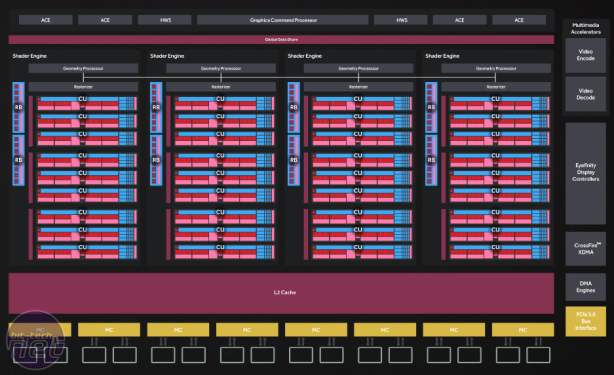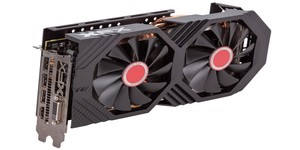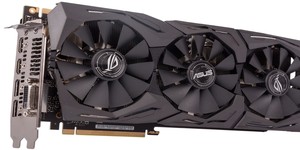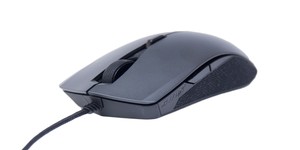Asus Radeon RX 580 Strix Gaming Top OC Review
Manufacturer: AsusUK price (as reviewed): £319.99
US price (as reviewed): $319.99
As we inch ever closer to the launch of Vega and, hopefully, a bit of high-end GPU competition, AMD is looking to tide people over with the launch of the RX 500 series, starting today with the RX 580 and RX 570, which will replace the RX 480 and RX 470 cards in the stack, respectively. For enthusiasts that like to stay on top of the latest graphics technology, there's little to be excited about; the two cards are simply higher-clocked versions of those that they replace. Mid-cycle refreshes like this are becoming the norm, so this isn't an especially surprising launch. The appeal of these cards is going to be for anyone seeking an upgrade from hardware that's two years older or more and may have limited or no support for modern APIs, VR, and features like variable refresh rate (FreeSync) or HDR.
Unlike with the RX 480, AMD is not producing a reference card for today's launch, so the focus is immediately going to be on third-party offerings. As such, while this review will briefly cover the specifications of both new cards, it will then shift its focus to the Asus RX 580 Strix Gaming Top OC, the first partner RX 580 card we've received.
| AMD Radeon RX 580 | AMD Radeon RX 480 | AMD Radeon RX 570 | AMD Radeon RX 470 | |
| GPU | ||||
| Architecture | GCN 4th Gen | GCN 4th Gen | GCN 4th Gen | GCN 4th Gen |
| Codename | Polaris 20 | Polaris 10 | Polaris 20 | Polaris 10 |
| Boost Clock | 1,340MHz | 1,266MHz | 1,244MHz | 1,206MHz |
| Base Clock | 1,257MHz | 1,120MHz | 1,168MHz | 926MHz |
| Stream Processors | 2,304 | 2,304 | 2,048 | 2,048 |
| Layout | 4 SEs, 36 CUs | 4 SEs, 36 CUs | 4 SEs, 32 CUs | 4 SEs, 32 CUs |
| Texture Units | 144 | 144 | 128 | 128 |
| Rasterisers | 4 | 4 | 4 | 4 |
| Tesselation Units | 4 | 4 | 4 | 4 |
| ROPs | 32 | 32 | 32 | 32 |
| Transistors | 5.7 billion | 5.7 billion | 5.7 billion | 5.7 billion |
| Die Size | 232mm2 | 232mm2 | 232mm2 | 232mm2 |
| Process Node | 14nm | 14nm | 14nm | 14nm |
| Memory | ||||
| Amount | 4GB or 8GB GDDR5 | 4GB or 8GB GDDR5 | 4GB GDDR5 | 4GB GDDR5 |
| Frequency | 2GHz (8Gbps effective) | 1.75GHz or 2GHz (7Gbps or 8Gbps effective) | 1.75GHz (7Gbps effective) | 1.65GHz (6.6Gbps effective) |
| Interface | 256-bit | 256-bit | 256-bit | 256-bit |
| Bandwidth | 256GB/sec | 224GB/sec or 256GB/sec | 224GB/sec | 211.2GB/sec |
| Card Specifications | ||||
| Power Connectors | 1 x 8-pin | 1 x 6-pin | 1 x 6-pin | 1 x 6-pin |
| Stock Card Length | N/A | 243mm | N/A | N/A |
| TDP | 185W | 150W | 150W | 120W |
If you're not familiar with the Polaris architecture that the RX 580 and RX 570 are built with, we'll refer you back or our original RX 480 review. As a reminder, both cards use the 5.7 billion-transistor, 14nm Polaris 10 GPU (now called Polaris 20, but there are no high-level physical changes). This nets you four Shader Engines, each sporting nine Compute Units that are all fully enabled in the RX 580 for a total of 36, which in turn gives you 2,304 streaming processors and 144 texture units. In the RX 570, four CUs are disabled, leaving us with 2,048 streaming processors and 128 texture units. At the back-end, there are 32 ROPs and eight 32-bit memory controllers for a 256-bit interface; this is the same for both cards.
As we said, the GPUs are unchanged, although as you would expect the 14nm FinFET process AMD uses has matured. AMD has been unspecific about the exact advantages it's now seeing, but this maturation coupled with some 'aggressive tuning' allows AMD to up the clock speeds. The boost clock is the most relevant one, since this is what the cards will run at provided thermal and power limits are in check, which they should almost always be with third-party designs. On the RX 580, this has increased from 1,266MHz to 1,340MHz, a six percent improvement, while the RX 570 has seen a more modest three percent jump from 1,206MHz to 1,244MHz. Naturally, partners will be offering cards with a range of different overclocks, and it remains to be seen what can be achieved with manual overclocking, although we're assuming that 'not much' is the answer there as it was before.
In terms of memory, we have an 8GB GDDR5 frame buffer running at 8Gbps for the RX 580, although 4GB SKUs will be available as with the RX 480. These may or may not come with a reduced memory speed of 7Gbps like before – we haven't been able to confirm, as AMD's primary focus is the 8GB SKU. The RX 570, meanwhile, increases the default memory frequency from 6.6Gbps to 7Gbps while the size remains at 4GB.
In pushing the cards faster, AMD seems to have increased power consumption. The RX 580 is now a 185W part compared to 150W before, while the RX 570 is rated at 150W compared to 120W for the RX 470. That said, AMD claims power consumption in specific situations has been improved thanks to a new, third memory clock state (in between idle and maximum) that reduces power consumption when two displays are connected and when watching multimedia content.
There are no new major features to discuss, but highlights of the cards include support for Radeon ReLive, AMD's solution for capturing, streaming, and sharing gameplay moments; Radeon Chill, a power-saving feature supported in League of Legends and Dota 2; FreeSync; and H.265 HEVC encode and decode.

MSI MPG Velox 100R Chassis Review
October 14 2021 | 15:04










Want to comment? Please log in.